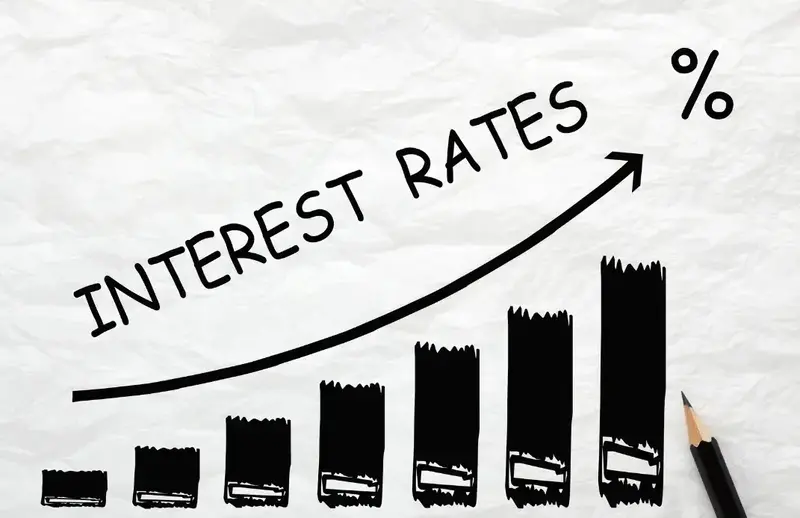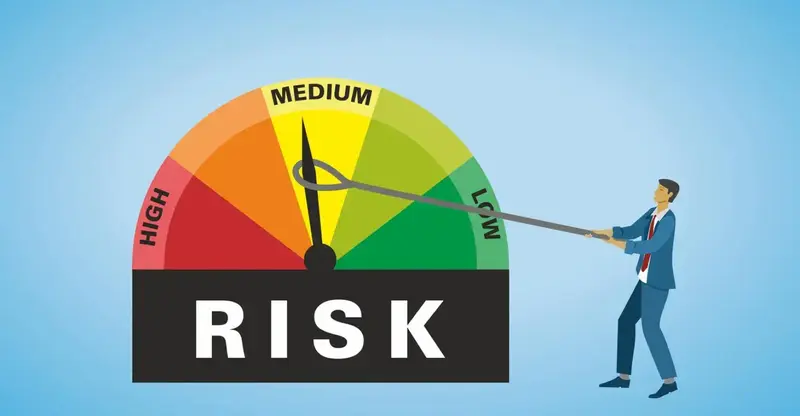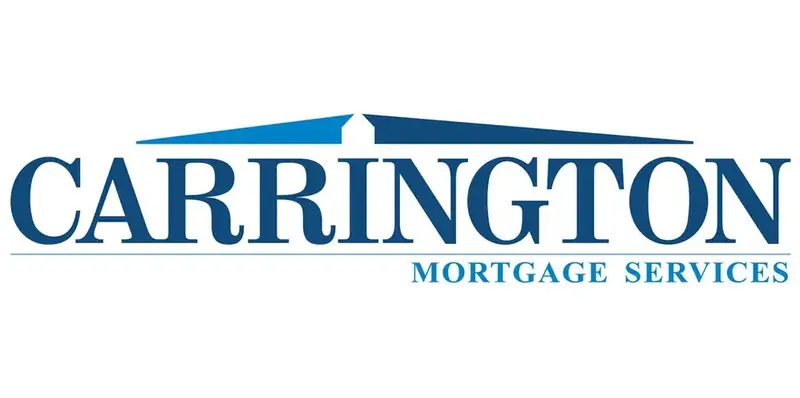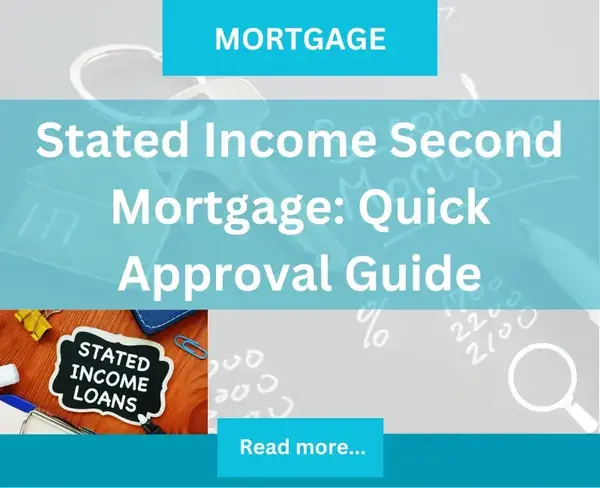Stated income second mortgage is a type of mortgage or home equity loan that doesn’t require the borrower to provide traditional income documentation. Stated income second mortgage, also known as a “stated income home equity loan” or “no-doc second mortgage.” Instead, borrowers state their income on the loan application, hence the term “stated income.” These loans are typically used by individuals who may have difficulty documenting their income through standard means, such as self-employed individuals, small business owners, or those with irregular income sources.
In this article, we will examine what second mortgage is, stated income second mortgage‘s eligibility and requirements, stated income second mortgage application process, stated income second mortgage interest rates and terms, risks and considerations of a stated income second mortgage, alternatives to stated income second mortgages, finding the right stated income second mortgage provider and finally the top companies that provide the stated income second mortgage.
- What is Second Mortgage?
- Stated Income Second Mortgage’s Eligibility and Requirements
- Stated Income Second Mortgage Application Process
- Stated Income Second Mortgage Interest Rates and Terms
- Risks and Considerations of a Stated Income Second Mortgage
- Alternatives to Stated Income Second Mortgages
- Finding the Right Stated Income Second Mortgage Provider
- Top Companies Providing Stated Income Second Mortgage
- Conclusion
- Stated Income Second Mortgage FAQ
What is Second Mortgage?
In the realm of real estate financing, second mortgages have become a popular choice for homeowners looking to leverage their property’s equity for various financial needs. Whether you are considering taking out a second mortgage or are simply curious about this financial instrument, this article will provide valuable insights into the world of second mortgages, covering topics such as 2nd mortgage rates, second mortgage lenders, refinancing options, and more.
Understanding Second Mortgages
A second mortgage, also known as a home equity loan or a 2nd mortgage, is a loan that is secured against the equity in your home. Home equity is the difference between the current market value of your property and the outstanding balance on your primary mortgage.
Second Mortgage Options
Second mortgages offer a range of options to homeowners, making them a flexible financial tool. Here are some common options and scenarios where you might consider a second mortgage:
- Fixed Rate Second Mortgage: This type of second mortgage offers a fixed interest rate, providing predictability and stability in your payments.
- Cash Out 2nd Mortgage: You can take out a second mortgage to access your home equity in the form of cash. This can be used for financial goals such as home improvements and debt consolidation.
- Second Mortgage Debt Consolidation: You can use a second mortgage to consolidate high-interest debts into a single, more manageable loan with a potentially lower interest rate.
- Short-Term Second Mortgage: Short-term second mortgages can be a quick source of funds for a specific project or financial need.
- Second Mortgage on Investment Property: If you own an investment property, you can also take out a second mortgage on it to finance renovations or other investments.
- Refinancing Mortgage to Buy a Second Home: Some homeowners use second mortgages to purchase a second property or vacation home. Unlike second property mortgages, investment property mortgages allow for longer lease terms. However, they also come with the toughest qualifying guidelines because they tend to have higher delinquency rates than other occupancy types.
Second mortgages provide homeowners with a valuable financial tool that can help them achieve various goals, from home improvements to debt consolidation and even investing in additional properties. The array of second mortgage options, including fixed rates, cash-out loans, and short-term solutions, allows for flexibility and customization to meet your specific needs. With the right approach and a clear understanding of your objectives, a second mortgage can empower you to unlock the full potential of your home’s equity and secure a brighter financial future.
Getting a Second Mortgage
To get a second mortgage, you will need to apply for one through a lender, such as a bank, credit union, or an online lender. Here’s what the process typically involves:
- Pre-Approval for Second Mortgage: It’s advisable to start by getting pre-approved, which will help you understand how much you can borrow and the terms you may be eligible for.
- Applying for a Second Mortgage: The application process will involve providing documentation, such as income statements, property appraisals, and credit reports.
- Second Mortgage Rates: Second mortgage rates can vary, so it’s important to shop around and compare offers to find the best second mortgage rates available.
- Refinance 2nd Mortgage: If you already have a second mortgage, you can explore the option of refinancing it to get better terms.
- Second Mortgage on House: Your primary residence is the most common property for a second mortgage, but you can also consider one on an investment property or vacation home.
Obtaining a second mortgage is a significant financial decision that can open doors to numerous opportunities. Whether you’re looking to access your home equity, consolidate debts, or invest in additional properties, a second mortgage provides a versatile solution. Remember to evaluate your financial situation, explore various lenders, and weigh the potential benefits against the associated costs, ensuring that your second mortgage serves as a valuable tool for enhancing your financial well-being.
Second mortgages offer a wide array of financial solutions for homeowners. Whether you need cash for a major project or want to consolidate debts, understanding the options, rates, and reputable lenders will help you make an informed decision. Before committing to a second mortgage, be sure to assess your financial situation, goals, and the terms that best suit your needs.
Stated Income Second Mortgage’s Eligibility and Requirements
A stated income second mortgage, often referred to as a “piggyback loan,” allows borrowers to use their stated income to qualify for the loan without having to provide traditional income documentation, such as tax returns and pay stubs. These loans can be useful for borrowers who have non-traditional income sources or have difficulty documenting their taxable income through traditional means. However, since the income verification mortgage industry can change, it’s essential to consult with a lender to get the most up-to-date information on eligibility and income loan requirements.
Here are some general eligibility and requirements for stated income second mortgages:
- Documentation: While you don’t need to provide traditional income documentation, you will still need to provide other documents, such as bank statements, a credit report, and proof of homeowners’ insurance. They’re commonly referred to as “alternative income verification loans,” which are also often called “alternative documentation mortgage loans,” or “bank statement loan programs.”
- Appraisal: Lenders will typically require a property appraisal to determine the current value of your home.
- Good Credit Score: Lenders typically require a relatively high credit score for stated income second mortgages, often 680 or higher. A good credit history is essential to compensate for the lack of income documentation.
- Equity in Your Home: You will need to have significant equity in your home to be eligible for a second mortgage. Lenders typically allow you to borrow up to a certain percentage of your home’s appraised value, often up to 85% or 90%.
- Stated Income: As the name suggests, you will mortgage need to state your income on the loan application. This is typically done in the form of a signed income statement. Be prepared to provide an accurate estimate of your income.
- Asset Verification: While income verification may be stated, lenders may still require verification of your assets. They want to ensure you have the means to make your income mortgage payments. Assets can include things like Debt service coverage ratio (DSCR). Mortgage loans are designed for investors as a no-income mortgage that allows individuals to purchase rental properties like single-family homes, condos, and apartments.
- Loan-to-Value Ratio (LTV): The LTV ratio, which is the ratio of the loan amount to the appraised value of your home, is an important factor. The lower the Loan-to-Value Ratio, the better your chances of approval. A lower LTV implies less risk for the lender.
- Debt-to-Income Ratio (DTI): Even though income is stated, income mortgage lenders will often calculate your debt-to-income ratio to assess your ability to repay the loan. A lower DTI is more favourable.
- Interest Rates and Terms: Stated income second mortgages typically come with higher interest rates and shorter terms compared to traditional mortgages. You should be prepared for potentially higher monthly payments.
- Lender Requirements: Different lenders may have varying eligibility criteria and mortgage lending requirements for stated income second mortgages. It’s essential to shop around and compare offers from different lenders to find the best fit for your financial situation.
Keep in mind that the requirements for stated income second mortgages can change based on market conditions and lender policies. It’s crucial to work with a knowledgeable mortgage broker or lender who can guide you through the process and help you find the best loan option based on your specific financial situation. Additionally, be aware that these income loan type of loans can be riskier, and you should thoroughly understand the terms and implications before proceeding.
Stated Income Second Mortgage Application Process
The application process for a stated income second mortgage, often known as a “piggyback loan,” provides an alternative financing option for individuals who face challenges documenting their income through traditional means or who have non-standard income sources. This unique stated income mortgage product allows borrowers to leverage the equity in their homes by stating their income, bypassing the need for extensive income verification mortgages typically associated with conventional mortgages.

The application process for a stated income second mortgage is similar to that of traditional mortgages, with some variations due to the specific nature of these loans. Here’s a step-by-step guide to the application process:
- Assess Your Financial Situation: Before you start the application process, evaluate your financial situation to ensure that stated income mortgages are the right choice for your needs. Consider your income, credit score, the amount of equity in your home, and the mortgage qualifying purposes of the loan.
- Choose a Lender: Research and select a lender that specializes in or offers stated income second mortgages. Consider factors such as interest rates, fees, and reputation. It’s advisable to work with a reputable lender.
- Prequalification: Contact the chosen lender to start the prequalification process. During this phase, the lender will assess your minimum credit score, income estimate, and other financial details to determine whether you are eligible for the loan.
- Gather Necessary Documentation: While stated income loans don’t require traditional income documentation, you will still need to provide some documents, including:
- Bank statements
- Proof of homeowners’ insurance
- Credit report
- Appraisal of your property
- Appraisal: The lender will order an appraisal of your property to determine its current market value. This is important to calculate the loan-to-value ratio (LTV).
- Underwriting: The lender’s underwriter will review your application, credit history, and other relevant documents to assess the risk and determine if you qualify for the loan.
- Approval and Terms: If your application is approved, the lender will provide you with the terms and conditions of the loan, including the interest rate, loan amount, and loan-to-value ratio. Review these terms carefully.
- Closing: Once you agree to the terms, you’ll move to the closing process. You’ll sign the necessary documents, and the lender will fund the loan.
- Repayment: After closing, you’ll be responsible for making regular payments on the second mortgage, just like any other mortgage. Be aware of the repayment terms and any potential changes in interest rates.
- Legal Consultation (Optional): It’s advisable to consider seeking legal advice before signing the loan documents, especially if you have any concerns or questions about the terms and conditions.
Keep in mind that the application process for stated income second mortgages can vary from lender to lender, and requirements may change over time. It’s essential to stay informed and work closely with your chosen lender to ensure a smooth and successful application process. Consulting with a financial advisor or mortgage specialist can help you make the best decision for your unique financial situation.
Stated Income Second Mortgage Interest Rates and Terms
Interest rates and terms for stated income second mortgages can vary depending on the lender, your creditworthiness, and the specific loan program you choose. These loans are generally considered riskier by lenders, which can lead to higher interest rates and shorter terms compared to traditional mortgages.

Here’s an overview of the typical interest rates and terms associated with stated income second mortgages:
Interest Rates
Stated income second mortgages typically come with higher interest rates than first mortgages or traditional mortgage products. You can expect to pay more in interest over the life of the loan. These higher rates reflect the increased risk taken on by lenders due to the limited income documentation.
Terms
Second mortgages often have shorter terms compared to first mortgages. Typical terms for stated income second mortgages are 15 to 20 years, although 10-year terms are not uncommon. Shorter terms mean higher monthly payments but also help you pay off the loan faster.
Some second mortgages have balloon payments, where you make smaller monthly payments for a certain period (often 5-10 years), after which a large, lump-sum payment of the remaining balance is due. Borrowers must be prepared to refinance, sell the property, or pay off the balloon payment when it comes due. Fixed rates provide income stability with consistent monthly payments, while variable rates may initially be lower but can fluctuate over time.
Some lenders offer interest-only payment options, where you only pay interest for an initial period (typically 5-10 years). After that, you’ll need to start paying down the principal as well. It’s important to note that the specific interest rate and terms you qualify for will depend on various factors, including:
- Credit Score: A higher credit score will generally help you secure a lower interest rate.
- Loan-to-Value (LTV) Ratio: The lower the LTV, the better the terms you’re likely to receive. A lower LTV means you’re borrowing a smaller percentage of your home’s value.
- Market Conditions: Interest rates can fluctuate based on economic conditions and the lender’s policies.
- Lender Policies: Different lenders have different criteria for interest rates and terms, so it’s important to shop around for the best deal.
Before committing to a stated income second mortgage, it’s crucial to carefully review and compare the interest rates and terms offered by various lenders. Additionally, be sure to understand the potential risks, including the impact of short-term and balloon payments on your financial stability. Consulting with a financial advisor or mortgage specialist can provide valuable guidance in making an informed decision that aligns with your financial goals and circumstances.
Risks and Considerations of a Stated Income Second Mortgage
A stated income second mortgage, often known as a “piggyback loan,” offers a financial lifeline to individuals with unique income situations or those who face challenges in providing traditional income documentation. Understanding the potential drawbacks is crucial to making an informed decision and effectively managing the financial implications of a stated income second mortgage.

While stated income second mortgages can be a valuable financial tool for some borrowers, they come with certain risks and considerations that should be thoroughly understood before taking out such a loan. Here are some of the key risks and considerations:
- Higher Interest Rates: Stated income second mortgages often come with higher interest rates compared to traditional mortgages. This can result in significantly higher interest costs over the life of the loan.
- Shorter Loan Terms: Second mortgages typically have shorter terms, often 15 to 20 years, which can lead to higher monthly payments. Shorter terms mean you’ll need to pay off the loan more quickly.
- Stricter Credit Requirements: Lenders often require a higher credit score for stated income second mortgages. If your credit score is not strong, you may have difficulty qualifying for these loans.
- Potential for Balloon Payments: Some stated income second mortgages may have balloon payments, where a large lump-sum payment of the remaining balance is due at the end of a specified period (e.g., 10 years). Be prepared to refinance, sell the property, or handle the balloon payment when it comes due.
- Risk of Negative Equity: If the value of your home decreases, you may find yourself owing more on your first and second mortgages than your home is worth. This can be financially risky if you need to sell the property.
- Documentation Requirements: Although income is stated, lenders may still require you to provide other mortgage documentation, such as bank statements and a credit report. Be prepared to furnish these documents. It’s important to note that while these state income mortgage alternatives have fewer income documentation requirements than traditional mortgages, they often come with higher costs and risks.
- Potential for Predatory Lending: Stated income loans were historically associated with predatory lending practices, particularly before the 2008 financial crisis. Be cautious and work with reputable lenders to avoid being taken advantage of.
- Limited Availability: Stated income second mortgages are less common in the post-2008 financial crisis era due to increased regulations and stricter lending standards. Finding a lender that offers these loans may be more challenging.
- Impact on Your Credit: Taking on a second mortgage will affect your credit profile, and missing payments or defaulting can have severe consequences on your credit score and financial stability.
- Property as Collateral: In a second mortgage, your property serves as collateral. If you default on the loan, you risk losing your home through foreclosure.
- Consider Future Interest Rate Changes: If your second mortgage has a variable interest rate, be aware of the potential for future rate increases, which could result in higher monthly payments.
- Repayment Plan: Ensure you have a clear plan for repaying the loan. Given the higher monthly payments and shorter terms, managing your finances effectively is crucial.
Before taking out a stated income second mortgage, it’s vital to carefully assess your financial situation, consider the terms and interest rates offered, and have a clear repayment strategy in place. Consulting with a financial advisor or mortgage specialist can provide valuable guidance in determining whether this type of loan aligns with your financial goals and circumstances. Be sure to work with a reputable lender and thoroughly review all loan terms and financial documents before proceeding.
Alternatives to Stated Income Second Mortgages
While stated income second mortgages can be a lifeline for borrowers with non-standard income sources or those facing challenges in providing traditional income documentation, they come with specific risks and higher costs. For those seeking alternative ways to access funds for various financial needs or investments, there are several viable options available.

Alternatives to stated income second mortgages can be more suitable for certain borrowers, especially if you’re concerned about the higher interest rates, shorter terms, and potential risks associated with these loans. Here are some alternatives to consider:
- Unsecured Personal Loans: If you need to consolidate debt or finance other expenses but can’t provide income documentation, consider unsecured personal loans. These loans do not require collateral (such as your home), but they may come with higher interest rates than home equity options.
- Home Equity Line of Credit (HELOC): A HELOC is a revolving line of credit secured by your home’s equity. It offers flexibility to borrow funds as needed, and you only pay interest on the amount you use. HELOCs generally require income documentation, but the terms and interest rates are typically more favourable than stated income second mortgages.
- Federal Housing Administration (FHA) Loans: FHA loans have more lenient income and credit requirements compared to conventional mortgages. They may be an option for borrowers with non-traditional income sources.
- Cash-Out Refinance: With a cash-out refinance, you can replace your existing mortgage with a new one that’s larger than your current loan balance. You receive the difference in cash, which can be used for various purposes. While income documentation is usually required, cash-out refinances generally come with competitive interest rates.
- Seller Financing: In some real estate transactions, the seller may be willing to provide financing for the purchase. This can be a suitable income loan alternative ideal if you’re buying a property and can’t obtain traditional financing.
- Peer-to-Peer Lending: Peer-to-peer lending platforms connect borrowers with individual investors who are willing to provide loans. Some of these platforms may have more relaxed income verification requirements compared to traditional lenders.
- USDA and VA Loans: If you are a qualified veteran or meet specific rural property criteria, you may be eligible for VA or USDA loans, which offer more flexible income verification requirements.
- 401(k) Loans: If you have a retirement savings account, you can explore the option of borrowing against it. Be aware of the implications for your retirement savings if you choose this option.
- Increase Income Documentation: In some cases, it may be feasible to work on improving your income documentation mortgage loan process, which could make you eligible for more favourable traditional mortgage options in the future.
- Traditional Second Mortgage (Home Equity Loan): A traditional home equity loan, also known as a second mortgage, allows you to borrow against the equity in your home, but it typically requires traditional income documentation. These loans often come with lower interest rates and longer terms compared to stated income second mortgages. The new loans are called qualified mortgage (QM) loans and consist of conventional mortgages that require the lender to verify the borrower’s ability to make repayments with W2s and 1099s if the borrower is self-employed.
When considering alternatives to stated income second mortgages, it’s essential to weigh the terms, interest rates, and eligibility requirements of each option. Consult with a financial advisor or mortgage specialist to determine the best fit for your specific financial situation and goals. Additionally, carefully assess your ability to manage the loan and meet the repayment obligations of any alternative you choose.
Comparison of Stated Income Second Mortgage vs. Traditional Mortgage
| Feature | Stated Income Second Mortgage | Traditional Mortgage |
| Income Verification | Minimal | Extensive |
| Interest Rates | Higher | Lower |
| Application Process | Faster | Lengthier |
| Suitable For | Self-employed/Investors | Employed with steady income |
Finding the Right Stated Income Second Mortgage Provider
Finding the right stated income second mortgage provider is a critical step in securing financing for various financial needs, whether it’s debt consolidation, home improvements, or other investments. These unique mortgage products cater to individuals with non-standard income sources or those facing challenges in verifying their earnings through traditional loan means. However, the process of finding a reputable provider can be both daunting and crucial to ensuring favourable terms and conditions.
Here are the steps to help you find the right provider:
- Start with Local Banks and Credit Unions: Contact local banks and credit unions in your area. They may offer stated income second mortgages, and dealing with a local institution can have advantages, such as easier communication and in-person support.
- Online Lenders: Explore online mortgage lenders and brokers who specialize in stated-income loans. Many online lenders offer a wide range of mortgage products and may be more flexible when it comes to income verification.
- Mortgage Brokers: Consider working with a mortgage broker who can connect you with multiple lenders, increasing your chances of finding a suitable provider. Brokers often have access to niche loan products, including stated income second mortgages. A skilled mortgage broker will help you identify lending companies that offer specified income loan alternatives and guide you through the loan application process.
- Professional Associations: Look for mortgage providers affiliated with professional associations such as the National Association of Mortgage Brokers (NAMB) or the National Association of Realtors (NAR). Membership in such associations can indicate a higher level of professionalism.
- Check Online Reviews: Research potential lenders online and read reviews and ratings from previous customers. This can give you insights into the experiences of other borrowers with the lender.
- Lender Websites:
- Visit the websites of lenders you’re considering.
- Review their loan products, terms, and eligibility criteria.
- Contact them directly to ask any questions or request more information.
- Prequalification or Preapproval: Consider getting prequalified or preapproved by multiple lenders. This will help you compare offers and assess which lender is willing to work with your specific financial situation.
- Evaluate Terms and Conditions: Carefully review the terms, interest rates, loan-to-value ratios, and any fees associated with the loan. Ensure you fully understand the financial implications of the loan.
- Verify Licensing and Reputation: Ensure the lender is licensed to operate in your state. Check their reputation with your state’s regulatory authority or the Consumer Financial Protection Bureau (CFPB) to confirm their legitimacy.
- Consult with a Financial Advisor: It’s advisable to consult with a financial advisor or mortgage specialist who can provide guidance and recommendations based on your unique financial situation.
Remember that the availability of stated income second mortgages can vary by region and lender, and it’s important to compare multiple offers to find the best fit for your needs. Additionally, be cautious of predatory lending practices and thoroughly review all loan terms and documents before proceeding.
Top Companies Providing Stated Income Second Mortgage
As the demand for stated income second mortgages continues to grow, several financial institutions and lenders have emerged as leaders in offering these unique financial products. Stated income second mortgages, also known as “piggyback loans,” provide an alternative to borrowers who may have non-standard income sources or difficulties in verifying their earnings through traditional means. These companies have established themselves as reputable and reliable sources of financing, each with its own set of products and terms to meet a variety of borrower needs.
Here is a list of the best stated income second mortgage lenders:
- Griffin Funding
- Carrington Mortgage Loan
Let’s review the best stated income second mortgage lenders in order:
Griffin Funding

Griffin Funding is a mortgage and lending company that provides various mortgage and loan services to individuals and businesses. Mortgage and lending companies like Griffin Funding typically offer services such as traditional home loans, refinancing, and other financial products related to real estate. Any home loan requires you to prove income stability, even on seasonal income.
Griffin Funding, like other mortgage and lending companies, likely plays an essential role in helping individuals and businesses achieve their real estate and financial goals. Suppose you are considering mortgage or lending services. In that case, it’s advisable to conduct thorough research and reach out to Griffin Funding directly to learn more about their specific offerings and how they can assist you in your real estate journey.
Stated Income Second Mortgage with Griffin Funding
Griffin Funding is a mortgage lender that offers various types of mortgage loans, including second mortgages. A “stated income” second mortgage, often referred to as a “no-doc” or “low-doc” mortgage, is a type of loan where the borrower doesn’t need to provide traditional income documentation, such as pay stubs, W-2s, or tax returns, to qualify for the loan.
These types of loans are typically designed for self-employed individuals or borrowers with non-traditional income sources who may have difficulty documenting their income through standard methods. Instead of providing detailed income documentation, borrowers are usually required to “state” their income on the loan application, hence the name “stated income.”
It’s important to note that after the 2008 financial crisis, there were significant changes in the mortgage industry, and the availability of stated-income loans became limited. Lenders are now subject to more stringent regulations, and they generally require borrowers to provide more extensive documentation to prove their ability to repay the loan. It’s important to research the specific terms and conditions of a stated income second mortgage offered by Griffin Funding. Additionally, consider consulting with a financial advisor or a mortgage professional to determine if this type of loan is the right fit for your financial situation and goals.
To learn more about Griffin Funding, you can review this article: Griffin Funding
From this link you can visit Griffin Funding‘s website: https://griffinfunding.com/
Griffin Funding Phone Number: 855-698-1098
Carrington Mortgage Loan

Carrington Mortgage Loan is a residential mortgage lender and servicer based in the United States. They offer a variety of traditional home loan criteria and services, including conventional loans, FHA loans, VA loans, USDA loans, and jumbo loans, among others. Carrington Mortgage Loan may also specialize in providing home loans to borrowers with less-than-perfect credit, which can be a good option for individuals who have had difficulty obtaining a mortgage through traditional lenders.
Like many modern mortgage lenders, Carrington Mortgage Loan may provide online tools and resources for loan applications, account management, and other related services. They may have physical branches in various locations throughout the United States, and you can contact them through their website or by phone to discuss your mortgage needs.
Carrington Mortgage Loan stands as a reliable and flexible option for those navigating the often complex world of mortgages. Whether you’re a first-time homebuyer with a solid credit history or someone who has encountered credit challenges, Carrington Mortgage Loan offers a broad spectrum of loan products to suit your needs. To learn more about Carrington Mortgage Loan and explore their current offerings, visit their official website or reach out to their team directly.
Stated Income Second Mortgage with Carrington Mortgage Loan
A “stated income second mortgage” is a specific type of mortgage product, and Carrington Mortgage Loan, offer such loans as part of their mortgage offerings. A stated income loan property, often referred to as a “no-doc” or “low-doc” loan, allows borrowers to state their income on the loan application without providing extensive documentation to verify their income. These loans were more common before the housing crisis of 2008 but have become less prevalent due to regulatory changes.
Suppose you are interested in a stated income second mortgage or any specific mortgage product. In that case, it’s advisable to contact Carrington Mortgage Loan or other lenders directly to inquire about their current loan options, terms, and eligibility criteria, as well as to discuss your unique financial situation. Keep in mind that mortgage options can vary, and your eligibility will depend on various factors, including your creditworthiness and the specific terms offered by the income lender.
To learn more about Carrington Mortgage Loan, you can review this article: Carrington Mortgage Loan
From this link you can visit Carrington Mortgage Loan‘s website: https://www.carringtonmortgage.com/
Carrington Mortgage Loan Phone Number: (800) 561-4567
Conclusion
In conclusion, a stated income second mortgage can be a viable financial solution for individuals seeking additional funds while avoiding the stringent income documentation requirements associated with traditional loans. However, it’s essential to approach this option with caution. It’s crucial to assess your financial situation carefully, explore other borrowing alternatives, and work with a reputable lender who can provide transparent terms and guidance throughout the process. While a stated income second mortgage can provide a lifeline for some, it’s not without its challenges, and making an informed decision is crucial to ensure your long-term financial well-being.
Stated Income Second Mortgage FAQ
A stated income second mortgage allows homeowners to borrow against their home’s equity without the need to document their income extensively. This type of financing can be particularly advantageous for self-employed individuals, freelancers, or those with variable incomes who may need help to provide traditional proof of income. In this FAQ, we’ll explore key aspects of stated income second mortgages, including their benefits, potential risks, and common misconceptions, helping mortgage borrowers make informed decisions about leveraging their home equity under flexible income documentation requirements.
Who should consider a stated income second mortgage?
It’s ideal for self-employed individuals, freelancers, or investors who can’t easily document their income but have substantial equity in their homes.
What happens if I can’t repay a stated income second mortgage?
Defaulting on the loan can lead to foreclosure. It’s important to assess your financial stability and discuss risks with your lender before proceeding.
How can I secure similar loans successfully?
To increase your chances of loan approval, maintain a good credit score, have substantial assets, keep detailed financial records, work with a knowledgeable mortgage broker, and be prepared to explain your financial situation clearly to lenders.
What are the interest rates for stated income second mortgages?
Interest rates for these loans are typically higher than those for standard mortgages because the lender takes on more risk by not requiring standard income verification.
Can I refinance a stated income second mortgage?
Yes, refinancing is possible, but it depends on the lender’s policies and the terms of your existing mortgage. Refinancing can help secure a lower interest rate or better terms.






















